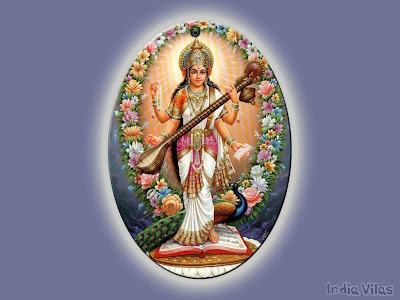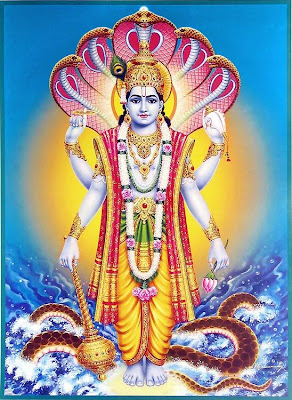In February 2011 there are two Ekadashi Fasting dates. Ekadasi fasting is dedicated to Hindu God Vishnu and falls on the 11th day of a lunar fortnight. Ekadashi February 2011 dates are February 14 and February 28.
The Ekadasi on February 14, 2011 is known as Jaya Ekadasi. This Ekadasi is also observed as Bhishma Ekadasi mainly in South India. In eastern parts of India, this Ekadasi is known as Bhoumi Ekadasi
How To Observe Ekadasi VRAT?Ekadasi Fasting is dedicated to Lord Vishnu and is observed on the 11th day of waning and waxing phase of moon in a traditional Hindu calendar. This is one of the most popular Vrat observed in Hinduism. How to observe Ekadashi was narrated to Arjuna by Lord Krishna and is found in the Bhavisyottara Purana.
When to start Ekadasi Fasting?
Lord Krishna advices Arjuna to begin the Ekadasi fasting in the autumn season with Utpanna or Uttpatti Ekadasi occurring during the waning phase of the moon in November – December.
Fasting Method
Ekadasi is the name of the Goddess that arose from Lord Vishnu to defeat Demon Mura. Happy with her divine act, Lord Vishnu blessed her that anyone who observes Ekadasi fast will be freed of their sins and will attain Moksha.
Some people only take a single meal on the Dasami day, the day before Ekadasi.
Things needed for Ekadasi Puja and Prayer
- A picture or photo or idol of Lord Vishnu
- Fruits
- Tulsi leaves (The tulsi leaves should not be picked on the day but on the previous day)
- Yellow bananas
- And other normal puja items
Observance
- Wake up early in the morning. Take bath and offer prayers.
- Perform a simple puja to Lord Vishnu at home by lighting a lamp and offering fruits and Tulsi leaves.
- Pray or meditate for few minutes.
- If there is a Vishnu temple nearby visit the temple and witness morning pujas and rituals.
Complete fast or Upavas on the day is the main observance.
Ekadasi Fasting
Fasting is for 24 hours. It is believed that a partial or total abstinence from food on Ekadasi is rewarded with bliss.
- If you have any health problem or are taking medicines, please consult your doctor before deciding on fasting. You can also opt for a partial fast by avoiding food made of rice.
- Do not eat food made from rice on Ekadashi.
- Strictly avoid eating rice and grains, honey, meat and eating on a bell metal plate. Do not apply oil on the day.
- Those taking partial fast can consume fruits and milk.
Ekadasi, or Ekadashi, is an important Upvaas (fast) dedicated to Lord Vishnu. Millions of Hindu devotees observe Ekadasi, which is considered highly auspicious by Lord Vishnu devotees. The traditional approach is to abstain from food completely on the day. But nowadays a complete fast is not possible for many people. Such people consume certain food items on the Ekadasi day and observe only a partial fast.
It is believed that demon Mura found a dwelling place in the rice and Lord Vishnu appeared in the form of Ekadasi to annihilate Mura. Therefore devotees who fast on the Ekadashi day avoid food made from grains.
Many devotees due to several reasons – like health and job commitments – observe partial fast on the day. Such people avoid non-vegetarian and food items made from beans, pulses and grains, especially rice. The most preferred Ekadasi fasting food in western parts of India is Sabudana Khichadi with potatoes and ground nut - but no onion and garlic.
The food that can be consumed on the Ekadasi day includes fresh and dried fruits, milk products, vegetables and nuts.
As the list of Ekadasi food expands there will be new issues cropping up like – Are you sure this can be consumed on Ekadasi?
So the golden rule is avoid pulses and grains on Ekadasi.
Drink lots of water and eat fresh and dried fruits.
In Hinduism, Upvaas is meant to bring a person close to Brahman. So forget about the rules and regulations and what you are going to gain from the Ekadashi fast. Spend the day in purifying the mind and body.
Afternoon
Take bath and offer prayers to Lord Vishnu
Evening Prayers
- Take a bath in the evening.
- Repeat the morning puja to Vishnu
- Visit Vishnu temple and witness the evening puja and rituals.
Prayers for Ekadashi
- Vishnu Ashotharam
- Vishnu Sahasranamam
- Simple Chanting of – Om Namo Narayana
- Or any prayers dedicated to Lord Vishnu or Sri Krishna
No Sleep of Keeping Vigil at Night
Staunch devotees who observe Vaikunta Ekadasi fasting do not sleep on the day. They spend the whole night at Vishnu temples or by singing prayers or listening stories dedicated to Lord Vishnu.
But those devotees who have health problems sleep at night. Those people who work, take rest at night and avoid keeping vigil at night
The fast is broken on the next day (Dwadashi) after taking bath. Offer prayers to Lord Vishnu by lighting a lamp and then you can break the fast.
Ekadasi Recipes:~
NOTES: Check the label of the white choc to see that there are no grains, cocoa, E 410, E 412, 410, 412 etc ~ Check hing to make sure it is free from wheat and rice flour - get the pure resin hing and grate it to fine powder.
Paneer Mazedaar
Rich and creamy -- a reward for fasting !
Ingredients:
- 500 gms Paneer, cubed
- 3 tbsp Singhare ka atta (waterchestnut flour)
- 2 tbsp Magaz (melon seeds)
- 2 tsp Sendha namak (rock salt)
- 1 tsp Chilli powder
- 2 tsp Zeera (cumin seeds), roasted, powdered
- 2 tsp Dhania (coriander), powdered
- 2 tbsp Ghee (clarified)
- 1 tbsp (or to taste) Green chillies, chopped
- 2 tbsp Hara dhania (green coriander), chopped
- ¼ cup (60 gms) Malai (fresh cream)
Mix together paneer, atta, magaz, namak, chilli powder, dhnia powder, well enough to coat the paneer.
Heat the ghee, add green chillies and ginger to it. Sauté till slightly coloured, then add paneer mix.
When the paneer is light brown, add enough water to cover the paneer and bring to a boil. Leave to simmer for 3-4 minutes, until well blended.
Add malai and half of the hara dhania and heat through. Serve hot, garnished with the remaining dhania.
Sabunada Khichdi
Ingredients:
2 cups sago (sabudana)
1 cup roasted, coarsely pounded peanuts
1 tsp. cumin seeds
6 green chilies
4 tbs. ghee
1/2 lemon finely chopped
fresh coriander for garnishing
1/2 cup freshly scraped coconut
What you do:
Wash sago, drain and set aside for one hour. Heat ghee. Add cumin seeds. Then add green chilies, letting it fry briefly. Mix in sago, peanuts, salt and sugar to taste. Keep covered and cook on slow flame for 5-10 minutes. You can add small cubes of boiled or fried potatoes. Garnish with coconut and coriander leaves. Serve hot.
Curried Vegetables - South Indian style -Avial -
Ingredients
Vegetables - Carrots, Potatoes, Pumpkin, Eggplant .
Coconut 1 cup
Green chillies 8
Red chillies 2
Cumin seeds 1 t.spoon
Tamarind paste 1/4 t.spoon
Salt 1 t.spoon (or to taste)
Coconut oil 2 t.spoon
Yogurt 1/2 cup
Curry leaves a few
Method
Chop all the vegetables evenly, and cook it with little water.
Add turmeric and salt to this.
Grind coconut, green chillies, red chillies, cumin seeds, and tamarind paste finely in yogurt.
Add the ground masala to the cooked vegetables, and let it cook until the flavour comes out.
Garnish with curry leaves and coconut oil.
Spinach
Ingredients:
For a serving size of 4-5
2 packets frozen spinach, thawed
1" cube of ginger, finely diced
3 Shukhno lonka (dry red chilli)
Dash of Hing (Asafoetida)
Potatoes - about 4 medium-large ones
Kasoori Methi (Dried fenugreek leaves)
Mouri/Saunf (Fennel seeds)
Salt to taste
Method:
Cut the potatoes into small pieces, and then either lightly boil them or microwave them for
about 8 min. Heat oil, preferably in a wok or kAdAi. To the hot oil, add ginger, hing, and
fennel seeds. Add the spinach, and fry on a high flame. After about 5 min of frying, add
salt, the dried chillies, and the potatoes. Mix evenly, and add the kasoori methi - then fry
for a few minutes. At this point, you might add a little water if you so desire. Serve hot.
White Chocolate Pistachio Truffles
These delicious creamy white chocolate truffles will testify that nothing is as nice as home-made chocolates.
(NOTE: check the label of the white choc to see that there are no grains, cocoa, E 410, E 412, 410, 412 etc)
Cooking Time : 5 mins.
Preparation Time : 10 mins.
Makes 30 truffles.
Ingredients
For the white chocolate truffle
1 cup (125 grams) white chocolate, chopped
1/3 cup fresh cream
a few drops coconut essence
To be mixed into a topping
3 tablespoons coarsely powdered pistachios
3 tablespoons desiccated coconut
Method
For the white chocolate truffle
1.Heat the cream in a broad pan and bring it to a boil.
2.Remove from the fire and add the white chocolate and coconut essence. Mix well to get a smooth mixture.
3.Refrigerate until firm.
How to proceed
1.Divide the white chocolate truffle into 30 equal portions.
2.Shape into even sized rounds.
3.Evenly coat the pistachio and coconut topping on the truffles by rolling them in the topping mixture.
4.Refrigertate until firm.
5. Serve chilled
Sago Jalebi
Ingredients:
Sago (Soaked in Water)-1 cup
Potatoes (Boiled & Mashed)- 1 cup
Maida- 3/4 cup (use kutu atta or waterchestnut flour - Singhare ka atta)
Besan- 1 Tablespoonful (banana flour or arrow root flour)
Ghee- 2 cup
Sugar- 1 cup
Water- 1 cup
Saffron & Saffron colour- little amount.
Almond & Pista (in pieces)- 5-6 pieces of each.
Method:
Mix soaked Sachamoti Sago & boiled meshed potatoes in a mixer well. Add, Maida & Besan in it. Add some water & prepare liquid mixture. Now, in a shallow frying pan, put some Ghee & heat it. Put the liquid mixture in pikari (an instrument to make jalebi) & make jalebi in light heat. After preparing jalebi, put these in Chasni (a hot mixture of water & sugar). Mix some saffron colour & put some cardamon powder in the Chasni as per your taste. Serve hot with putting some Pista/ Badam pieces on it. You can decorate jalebi with silver foils.
!!!! ~ Okay so there's a good start ~ !!!!
Please Send Us Urs Favourites Dishes 2 Share




